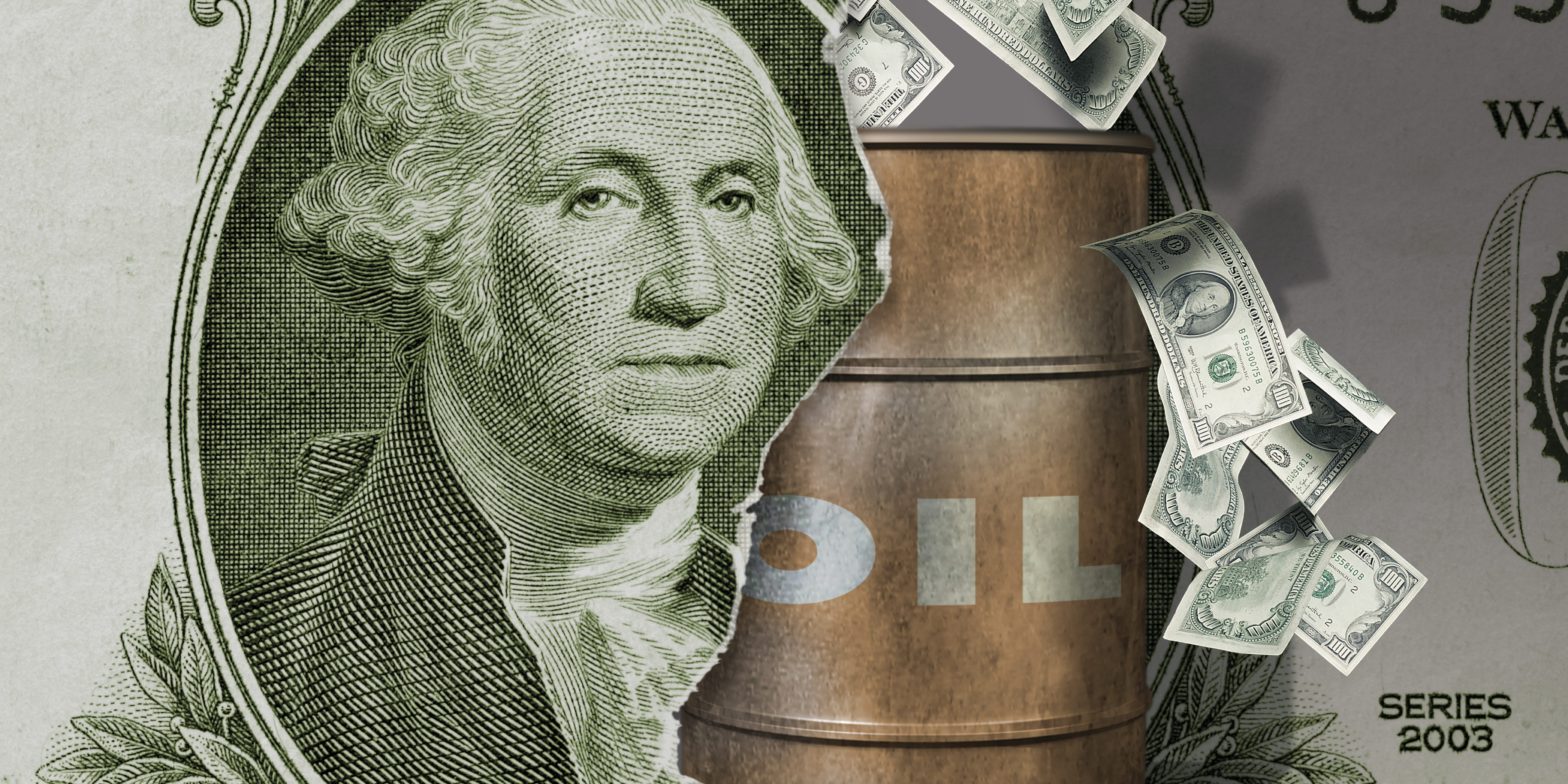A strong US dollar has historically put downward pressure on oil prices, but that hasn’t been happening lately. The US dollar has strengthened to a 20-year high, while crude prices have skyrocketed. “It’s a double whammy for everyone outside the US,” an economist told Insider. Loading Something is loading.
A strong US dollar has historically put downward pressure on oil prices as contracts for the commodity are typically priced in the greenback. But that hasn’t been happening lately.
This year, the dollar has strengthened roughly 8.5% to a 20-year high against the world’s other major currencies, as the Federal Reserve winds down the easy-money era and tightens policy.
At the same time, crude prices have surged 62% in 2022 as Russian supplies disappear from the market, global stockpiles shrink, and demand ramps up amid the rebound from COVID restrictions and the start of the summer travel season.
“It’s a double whammy for everyone outside the US,” Aleksandar Tomic, economist and associate dean at Boston College, told Insider. “Other countries have to pay even more for barrels [of crude] because they are dealing with the rising dollar and rising oil prices. The US is dealing with just the rising prices.”
The last time oil prices were this high in 2008, the dollar had plunged to a record-low against major US trading partners as the Fed was cutting interest rates during the financial crisis. The weaker dollar helped cushion the sticker shock from oil in other countries.
But the strength of the dollar today is making crude barrels more expensive when gauged in local currencies. Goldman Sachs analysts put the price of Brent crude at the equivalent of $150 per barrel — above the 2008 peak of $147.50.
And in certain individual currencies, the premium over 2008 levels is even steeper. When priced in the Indian rupee, oil is 46.7% above the 2008 peak, and in the South African rand, it’s 62.5% higher, according to Bloomberg data.
Meanwhile, some countries have looked to alternatives to the dollar. In March, Saudi Arabia entered talks with China to price an oil deal using China’s yuan. While Beijing also has political incentives to weaken the primacy of the US currency, a deal in a currency other than dollars between the world’s top oil exporter and the world’s biggest oil importer would mark a dramatic pivot away from 50 years of precedence.
Within the US, the strength of the dollar is less consequential, as its fluctuation primarily plays out across global markets and for other countries, Tomic explained. At the moment, other countries are paying more for crude because their currencies have not strengthened at the same rate as the US dollar.
“The dollar’s strength is making it more difficult for people outside the US because of that double whammy,” Tomic said. “It isn’t something we will see relief on quickly.”
Deal icon An icon in the shape of a lightning bolt. Keep reading
More: MI Exclusive Markets Oil Dollar Chevron icon It indicates an expandable section or menu, or sometimes previous / next navigation options.
